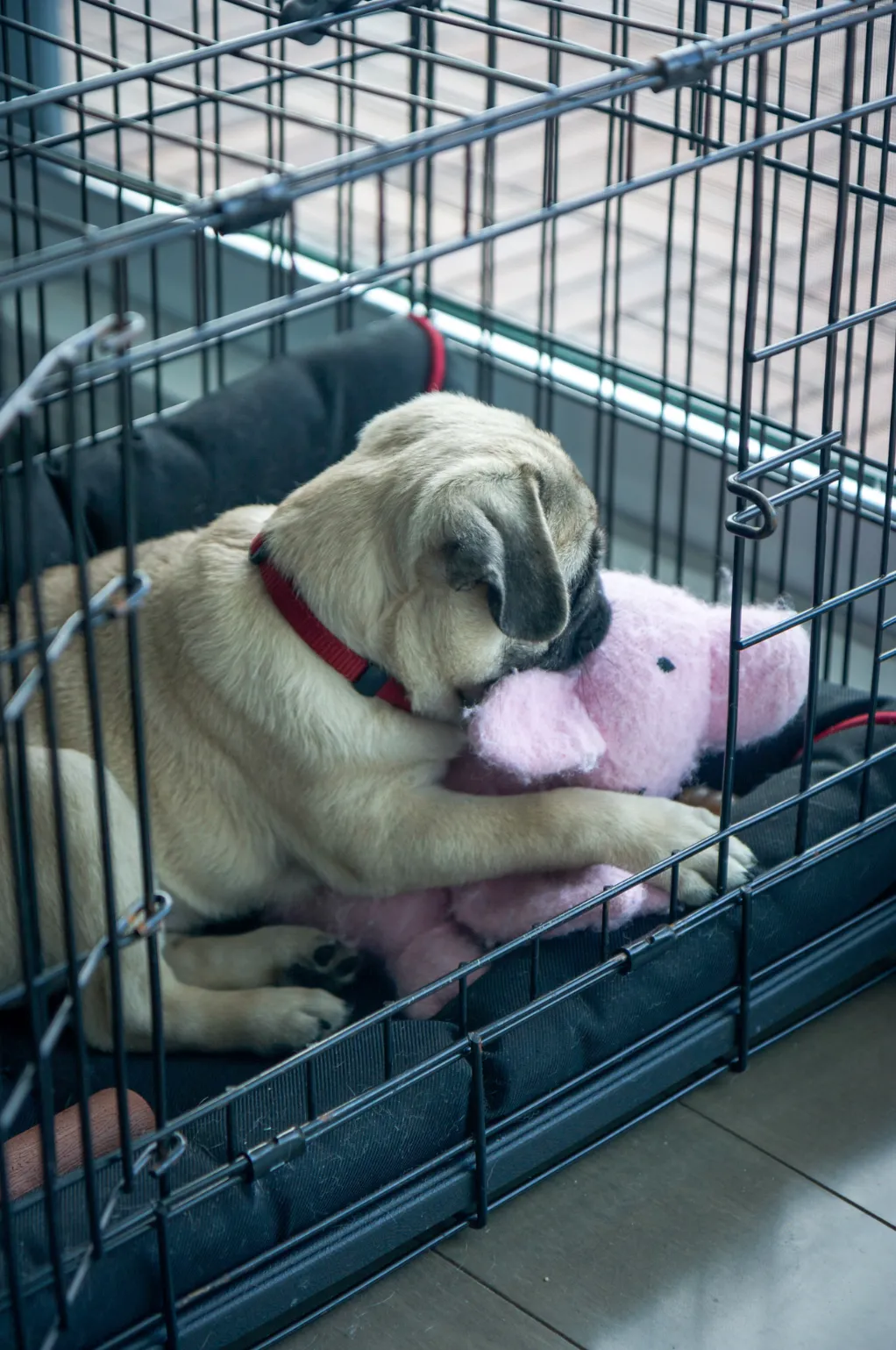Bringing home a 9-week-old puppy like your Cocker Spaniel is exciting, but dealing with puppy crate accidents at night can leave you sleep-deprived and frustrated. If you’re waking up multiple times for potty breaks and still finding messes despite pee pads, you’re not alone. Many new puppy parents face this challenge with young pups who have tiny bladders. The good news? With the right adjustments to your crate training routine, you can minimize accidents and get back to better sleep while housetraining progresses.
Crate training is one of the most effective methods for housebreaking puppies because dogs instinctively avoid soiling their sleeping area. However, small tweaks can make a big difference in preventing puppy crate accidents at night. Drawing from veterinary guidelines and real-world experience with my own 4-month-old pup—who once screamed at dawn for outings—these strategies will help.
Ensure the Right Crate Size for Effective Training
First, double-check your crate size. For housetraining, it should be just big enough for your puppy to stand, lie down, and turn around comfortably—no more. A crate that’s too spacious allows the pup to potty in one corner and sleep in another, defeating the purpose. Use a divider if your crate came with one; as your Cocker Spaniel grows, adjust it gradually.
Veterinarians from the American Kennel Club recommend this snug fit to leverage a puppy’s natural aversion to soiling their den. In my experience, switching to a properly sized crate reduced overnight incidents significantly within a week. If your pup is a “dirty dog”—one accustomed to living in waste from poor breeder conditions—consider a temporary larger setup.
For feeding and watering during the day, consider durable options like stainless steel dog bowls placed nearby to maintain hygiene around the crate area.
 Dog crate setup for puppy housetraining
Dog crate setup for puppy housetraining
Rethink Using Potty Pads Inside the Crate
Placing pee pads directly in the crate might unintentionally teach your puppy that it’s okay to eliminate there. While tempting for tiny bladders, this can prolong housetraining. Instead, transition to a puppy pen or exercise pen enclosing the crate. Keep the crate door open at night, with pads placed outside in the pen. This way, your pup learns to separate sleeping from pottying without soiling the crate.
If accidents persist for three consecutive nights, stick with the pen setup until resolved. Experts at the ASPCA note that this method prevents “crate dirtying” habits, especially in pups under 12 weeks. Clean any mishaps thoroughly with an enzymatic cleaner like Nature’s Miracle, which breaks down urine odors that attract repeat offenses. Remove bedding temporarily too—puppies often prefer soft surfaces for accidents.
Set Up a Safe Confinement Alternative
If a full pen isn’t feasible, confine your puppy to a small, easy-to-clean space like a laundry room or bathroom. Use baby gates or pen panels to limit the area to about 4×4 feet, including the open-door crate and a couple of potty pads. This mimics the den instinct while giving potty access.
During the day, incorporate consistent routines: feed measured meals, then take immediate potty breaks. Accessories like a dog bowl mat under bowls prevent slips and messes, tying into overall cleanliness that supports nighttime success.
 Adorable puppy learning crate training basics
Adorable puppy learning crate training basics
Master Nighttime Potty Breaks and Bladder Tips
At 9 weeks, expect two nighttime outings—set alarms if there’s a pattern, starting an hour earlier if needed. Puppies lack full bladder control, so after the first potty outside, wait 5-10 extra minutes or let them play freely. This ensures complete elimination and avoids the “rush inside” association that triggers indoor accidents.
By 10-12 weeks, most puppies hold it through the night once, improving to full nights around 3 months, per the Humane Society. Alternate nights with a partner to share the load. Praise successes lavishly with treats to reinforce good habits.
For elevated feeding that aids digestion, try small dog bowls with stand, which can be part of your daily routine leading to better overnight control.
Prioritize Sleep While Progressing Training
Decide your priority: fastest training means midnight wake-ups; survival mode allows the pen setup short-term without long-term setbacks. Consistency is key—mistakes happen, but stay patient. Like raising a baby, housetraining demands scheduling, supervision, and positivity.
Enhance your setup with a matching [dog bowl set with stand](https://dog bowl set with stand/) for organized mealtimes, and even fun touches like dog ties and bow ties for post-training celebrations.
In summary, optimize crate size, ditch in-crate pads, use pens for alternatives, clean meticulously, and refine nighttime routines to stop puppy crate accidents at night. Consult your vet for breed-specific advice, especially for active breeds like Cocker Spaniels. With these steps, you’ll both sleep better soon—hang in there!
References:
- American Kennel Club: Crate Training Guidelines (akc.org)
- ASPCA: Puppy Housetraining Tips (aspca.org)
- Humane Society: Bladder Development in Puppies (humanesociety.org)
